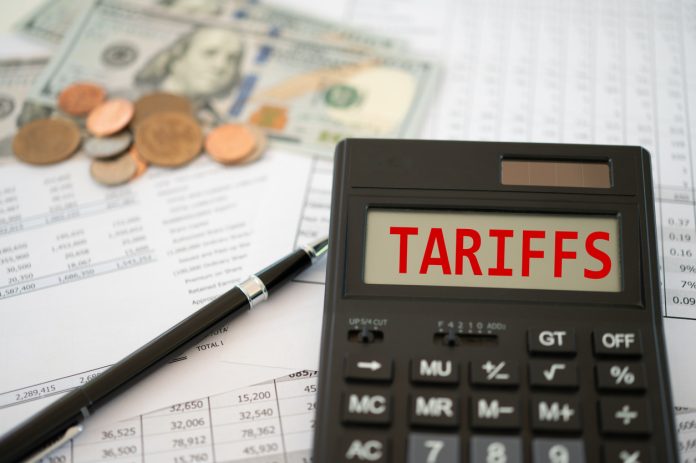Analyzing the Impact of Tariffs on Mid-Sized Businesses: Strategic Responses for a Changing Landscape
Tariffs have been around for centuries. Commonly used to protect emerging industries or bolster national security, tariffs have evolved beyond trade tools into economic levers that can shift markets overnight. Tariffs have re-entered the conversation for mid-sized business leaders, especially those with global supply chains or international customer bases. But here’s the thing: reacting like it’s still 1995 won’t cut it.
Part 1: Tariffs Aren’t New, But Your Response Should Be – A Different Look at an Old Policy Tool
Today’s tariff environment is more far-reaching, less predictable, and increasingly amplified by global supply dynamics. It’s not just the tariff itself that matters—it’s the perception of instability, the upstream supplier reactions, and the downstream ripple effects that touch pricing, production, and customer relationships.
The Industries Feeling It First
Industries like industrial manufacturing, electronics, construction, consumer goods, and textiles are experiencing increased cost pressures. But that’s just the start. If your business uses raw materials, sources components from abroad, or sells into tariff-affected sectors, you’re exposed—directly or indirectly.
Let’s not forget the less obvious players: service providers that install, integrate, or support tariffed goods, retailers relying on imported products, or even contractors dealing with material price hikes. It’s a domino effect. Suddenly, go-to-market assumptions from a year ago are outdated.
Tariffs: Cost vs. Confidence
Tariffs erode predictability. And predictability is fuel for a solid go-to-market strategy. Forecasts become fuzzier, pricing strategies wobble, and the sales team is left fielding difficult questions without clear guidance.
To respond, you need more than a spreadsheet. You need cross-functional awareness—operations, finance, marketing, and sales must all align on the implications and responses. That’s where many mid-sized firms falter. They treat tariffs as a procurement issue, not a strategic one.
Don’t Just Monitor Costs—Monitor Competitor Exposure
It’s tempting to only look inward when costs start climbing. But consider this: are your competitors hit harder than you? Are they passing on costs while you hold steady? That’s not just a difference—it’s a market opportunity.
Understanding relative impact lets you shift from defense to offense. And that starts with insight: how are others reacting, and how can your strategy play the long game instead of the panic game?
Manufacturer Action Plan: Getting Ahead of Tariff Disruption
For manufacturers, insight is your entry point into a more thoughtful response. Here are concrete steps to take:
- Audit Supplier Exposure: Identify which parts of your BOM (bill of materials) are most tariff sensitive. Know your risk level by part, supplier, and country. Model how big a share of your products and your revenue is subject to tariffs.
- Model Impact Across the Chain: Don’t assume full cost absorption. Build scenarios that factor in shared responsibility with suppliers and channel partners.
- Communicate Early: Start briefing key customers and partners. Don’t wait until prices move—prepare them for what’s likely to come.
- Engage the Whole Organization: Engage marketing, sales, and operations to build a unified response plan that balances pricing, communication, and production.
- Benchmark Competitor Activity: Understand how others in your sector are reacting. Use it to highlight your own strengths or plan contingencies.
Key Takeaways
- Tariffs are nothing new, but the speed and scale of their impact today requires updated playbooks.
- It’s not just the cost increase—it’s the uncertainty they create across your value chain.
- Watch your competitors closely: their exposure may become your edge.
- Go-to-market teams should be included early in tariff response planning.
- Start with insight—know your risk, your response options, and where opportunity may lie.
What’s Next:
In part 2 of our series on tariffs, we’ll dig into what sellers can do right now to protect their margins and retain customer trust—without falling into the all-too-common pricing trap.
Strategic Responses for Mid-Sized Businesses Facing Tariff Challenges
Industry Insights
When analyzing the impact of tariffs on mid-sized businesses, it’s crucial to understand the specific industries that are feeling the effects first. Industrial manufacturing, electronics, construction, consumer goods, and textiles are among the sectors experiencing increased cost pressures due to tariffs. However, the ripple effects extend beyond these industries to service providers, retailers, and contractors who are also indirectly impacted.
Market Trends
The current tariff environment is characterized by unpredictability and amplified by global supply dynamics. This poses challenges for businesses with international supply chains or customer bases. The perception of instability, reactions from upstream suppliers, and downstream ripple effects on pricing, production, and customer relationships all contribute to the complexity of the situation.
Structured Frameworks
It’s essential for mid-sized businesses to move beyond traditional responses to tariffs and adopt a more strategic approach. Cross-functional awareness is key, with operations, finance, marketing, and sales teams collaborating to align on implications and responses. Treating tariffs as a strategic issue rather than solely a procurement concern is crucial for navigating the evolving landscape.
Executive-Level Language
Mid-sized businesses must elevate their response to tariffs to an executive level. This involves analyzing competitor exposure, monitoring market trends, and proactively adjusting pricing strategies and communication plans. By engaging the entire organization in tariff response planning, businesses can develop a unified strategy that balances short-term cost management with long-term competitiveness.
FAQ
What steps can mid-sized businesses take to mitigate the impact of tariffs?
Mid-sized businesses can start by auditing supplier exposure, modeling the impact across the value chain, communicating early with key stakeholders, engaging the entire organization in response planning, and benchmarking competitor activity. By taking a proactive and strategic approach, businesses can better navigate the challenges posed by tariffs.
Conclusion
As tariffs continue to shape the global business landscape, mid-sized businesses must adapt their strategies to remain competitive and resilient. By leveraging industry insights, structured frameworks, and executive-level language, businesses can develop actionable responses that address the complexities of the tariff environment. By monitoring market trends, analyzing competitor activity, and engaging the entire organization in response planning, mid-sized businesses can position themselves for success in a rapidly changing world.


